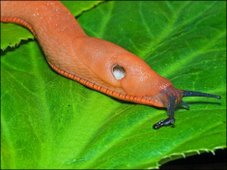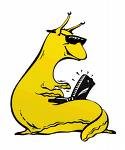This is from a handout I made a couple of years ago for a class on documentation. I thought it might be useful for others, especially with fall and winter events and A&S competitions coming ahead...
Documentation Basics for SCA Artisans
*The first thing to remember: DOCUMENTATION IS NOT RETROACTIVE!*
There are three parts to documentation:
Before the project– research
During the project– process
After the project– synthesis
PART ONE: RESEARCH
Start with a question–
i.e. “I want to make a Thing. What was the Thing like in the Middle Ages?
Look at your sources–
*primary
*secondary
*tertiary
A primary source is an extant object (or photo for SCA purposes).
A secondary source is writing about the object. (Inbetween primary and secondary is sort of a half-step– archeological dig records and notes.)
A tertiary source is writing about the writing, such as a review article, annotated bibliography, etc.
WIKIPEDIA IS NOT AN ACCEPTABLE SOURCE! It is at best a tertiary source. You can use it to point you towards sources, but combing through their citations. But don’t rely on any of the information you see there.
Take careful notes as you go– including dead ends, things that didn’t fit your vision, or opposed your basic theory. Particularly note: What did you find? What didn’t you find? From there you can narrow your research into some more specific questions.
So what do you want to know? The basic five questions that a journalist asks are a good place to start.
*WHO made the Thing? (This would be People or Ethnicity.)
*WHAT is it? What does it do?
*WHERE was it made?
*WHY was it made? What was it for, why was it needed?
*WHEN was it made? (Rough time period, at least to start.)
*HOW was it made? What tools, techniques, and materials were used?
If at all possible, come up with at least three sources. If you have one that is very primary (such as extensive photos and the records from the dig where it was found), two might do. The more sources, the better.
Take notes of all of this, make photocopies, take photographs, etc.
Note any conclusions you might make– i.e. “The Thing was made in France and England, but I was not able to find evidence of it in Italy. It shows up in the mid 15th century, and faded out with the introduction of the Whatsit. The Thing was made of calfskin and pickled herring, occasionally with lutefisk.”
NOW YOU ARE READY TO MAKE YOUR OBJECT!
PART TWO: PROCESS
Basically, this entails taking notes as you make your Thing. Costumers often do this as a ‘dress diary’. Take notes, draw diagrams, and snap photographs as you go, including parts, the interior, the underside, etc.
Assemble your tools and materials– refer to your research notes, and cite them: “I used Persian calfskin because examples 3 and 4 in the museum at Bayeux were made of it.”
Not any variations or deviations you make, and why: “I used canned pickled herring because my wife threatened to divorce me if I made my own in her kitchen.” Also note expected or possible differences that might arise in your project if you make changes.
MAKE YOUR THING!
Keep notes of your techniques, any problems with tools or materials or the process of construction: “The calfskin fell apart if the herring was spread too thickly.” A fair amount of this will involve trial and error. Record your findings: “½" was too much, 1/8" was too thin, 1/4" was just right.”
WHEN YOUR THING IS DONE–
Note how it is or isn’t like a period Thing. Does it work? If not, do you know why?
PART THREE: SYNTHESIS
Writing your documentation for an Arts & Sciences competition entry:
Documentation is the synthesis and writing of Research and Process: info that you already have!
Summarize your research notes. If you have drawings or photos, add them. Be sure to cover your Who, What, Why, When, and How questions and their respective answers.
Summarize your process notes– and be sure to detail your choices and the differences from the period Thing, and your reasons for those differences.
BIBLIOGRAPHIC INFORMATION
*Books and articles: The format (MLA, APA, CHICAGO, etc) doesn’t matter so much as being consistent with it. The information you need to record is: the author, title, publisher and place of publication, and the date of publication. If it is from a journal or magazine, note the issue and page numbers.
*Websites: the URL and title of the website, and the page, if it is a multi-page site.
*Illuminations: Illuminations have specific systems– i.e. if the picture is captioned with something like “BN 1179, 4v”, it is from the Bibliotheque Nationale, document number 1179, page 4, verso (front). These citations will vary some from museum to museum.
If you personally took photos such as at a museum, note where you took them, the information on the exhibit card (provenance), and if possible, the light level.
Personal interviews should note the interviewer, the person being interviewed, and the place and time it took place.
If this documentation is being assembled for a competition, there may be specific rules. Be sure to read them, and assemble your information accordingly.
If this isn’t for a competition, write it up anyway! It will come in handy when you go to make another one, or to share with another artisan, to write an article, or simply to add to the knowledge base of the re-creation community.
So that is the basics of Documentation: Research, Process, and Synthesis!
You now have the basics of arts and sciences research and documentation and are ready to research, make stuff, and share your learning with others! Go forth and create!
copyright Laura C. Minnick, 2011
Friday, July 19, 2013
Subscribe to:
Posts (Atom)

